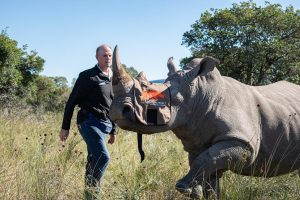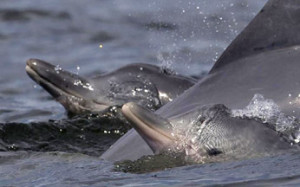A year ago this week Cecil the lion was killed by Walter Palmer, sparking an international outcry and greater scrutiny of trophy hunting for the heads, skins, or other body parts of wild animals. Eight African countries allow the consistent export of lion parts, including Mozambique, Zimbabwe, Namibia, and Tanzania, which holds nearly half the continent’s wild lions.
Lions have declined precipitously in the wild, down from an estimated 200,000 continent-wide a century ago to about 20,000 today. Trophy hunting advocates and some conservationists argue that fees from hunts support conservation efforts for the big cats, whose main threats are habitat loss, prey depletion, and greater conflict with humans.
Palmer, a dentist from Minnesota, is said to have paid $54,000 to bow-hunt Cecil, a magnificent, black-maned, 13-year-old lion who lived in Zimbabwe’s Hwange National Park and was well known to visitors. On July 1, he hit Cecil with an arrow on a farm outside the park, a place where the lion usually went to explore. The team tracked the famed cat and shot him again 11 hours later.
Cecil the lion died last July at the hands of an American trophy hunter. A lot has happened since Cecil died.
News of Cecil’s death spread instantly. Palmer became an international target of contempt, and thousands took to social media to protest Cecil’s death and trophy hunting in general. Late-night talk show host Jimmy Kimmel even cried. He put out a plea to viewers to donate to Oxford’s Wildlife Conservation Research Unit (Wildcru), the research group that had installed a radio collar on Cecil and was observing him. Donations poured in.
“I think it’s arguable that this is the biggest global response to a wildlife story there’s ever been,” says Wildcru director David Macdonald, who analyzed the media coverage. “I think all those people were exhibiting an interest not just in lions but in conservation more widely.”
Some countries decided to stop letting hunters take lion trophies across their borders. Australia flat out banned them. So did France. The United States, the biggest importer of lion trophies, added new protections for lions under the Endangered Species Act. Hunters now can’t bring back their trophies unless the animal came from a country that uses hunt fees to bolster lion conservation.
A coalition of 10 countries led by Niger also proposed stronger international protections that would ban the commercial trade in African lions and their parts. The 182 member countries of the Convention on International Trade in Endangered Species of Wild Fauna and Flora (CITES), which regulates the global wildlife trade, will vote on the proposal this fall.
As for hunting restrictions in Africa, Kenya, Botswana, and Zambia already had trophy-hunting bans in place before Cecil died. (Zambia decided to lift its ban last year.) But Cecil’s home country of Zimbabwe? In August it suspended big game hunting … for 10 days.
Airlines banned trophies.
Even if a country permits imports of lion trophies, bringing them home isn’t as easy now. More than 40 airlines—including American Airlines, British Airways, JetBlue, Delta, and Air Canada—have announced or reaffirmed bans on transporting trophies from the big five species: lions, rhinos, elephants, leopards, and Cape buffalo.
One airline went in the other direction: South African Airways had instituted a ban in April 2015, but just three weeks after Cecil’s death the company lifted its ban.
We learned more about trophy hunting and its impact.
A recent report by the International Fund for Animal Welfare broke down some of the statistics: People will pay from $24,000 to $71,000 to hunt lions in Africa (more than any other trophy species); about 8,200 African lion trophies were imported between 2004 and 2014, the sixth highest of any internationally protected species (the American black bear is number one); and trade rates for lion parts have risen faster than those for any other of these protected species.
So what impact has trophy hunting had? It depends on where the lions live and how the hunting is managed—scientists recommend strict enforcement of low quotas and only allowing hunts of older lions.
Some studies have shown that trophy hunting has taken a toll on lion populations in parts of Zimbabwe and Tanzania (though they’ve since enacted reforms), while scientists consider Namibia a success story. “The thing about sport hunting is it’s not all good, it’s not all bad,” says Craig Packer, director of the Lion Research Center at the University of Minnesota. “If you’re to take an average across the continent, though, the bad outweighs the good.”
One recent report by the Democratic staff of the U.S. House Committee on Natural Resources found that there’s little evidence to show that trophy-hunting fees help conservation, particularly in nations known for corruption.
And about trophy hunting of captive lions …
Last summer saw the release of Blood Lions, a documentary about canned hunting in South Africa, where a hunter pays up to $50,000 to pursue and kill a lion that had been hand-reared and is kept in a confined space, making it an easy target. There are up to 7,000 of these “ranch lions.”
Since the film aired, South Africa’s hunting association voted to distance itself from the captive-bred lion hunting industry. The world’s leading group of African lion researchers and conservationists also advised that any assessment of the country’s wild lions shouldn’t include these ranch lions.
“It’s important to stress that South Africa’s ranch lions are a horror that has nothing to do with lion conservation,” Hans Bauer, a lion researcher and lead author of a 2015 assessment of lions’ conservation status, previously told National Geographic.
Walter Palmer went back to his dental practice.
After a weeks-long hiatus, Palmer went back to his dental practice last September. Zimbabwean authorities said that he had shown the proper documentation to hunt Cecil, so he was never charged with a crime. Once news of the lion’s death broke, Palmer said he didn’t know that the animal he’d shot was the beloved Cecil.
Cecil’s cubs are doing just fine.
There’s one bright spot in the Cecil saga. Cecil and another male, Jericho, had led a pride with 14 offspring, including eight young cubs. All but one are now alive and well under Jericho’s protection, according to Wildcru’s Macdonald. Scientists had worried that another male would overthrow Jericho and kill those cubs, as incoming males often do so that the females will quickly become fertile again. But that hasn’t happened. “Jericho has managed to hold the fort,” Macdonald says, reports national-geographic.




